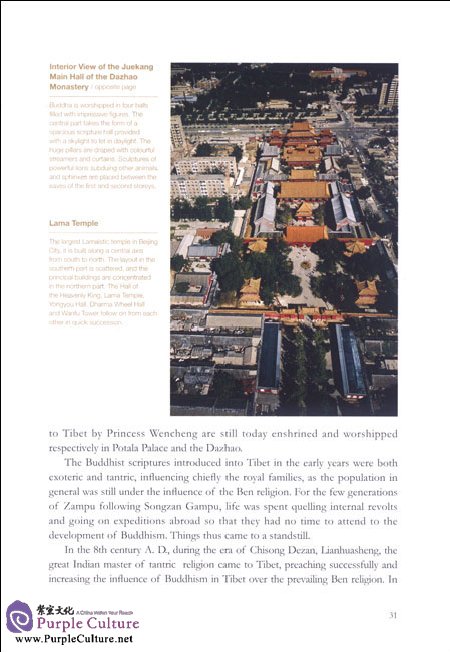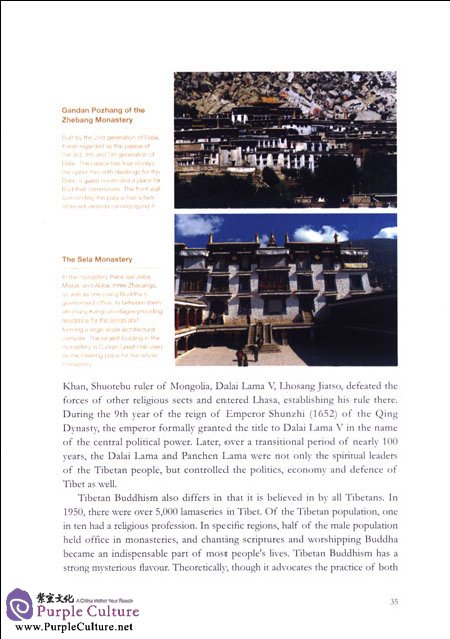The sophistication of ancient Chinese architecture gives it a specialplace within the architecture of the world. There are magnificentimperial palaces, solemn and breathtaking imperial tombs,mysterious sacrificial and ancestral altars and temples as well asa variety of vernacular dwellings of natural simplicity. Religiousbuildings are dotted about the country, with a riotous profusionof Buddhist, Taoist and Islamic temples or mosques. On top of allthis, city walls and fortifications, civic buildings for miscellaneouspurposes are rich in variety and form impressive landmarks.The exceptional series offers wide coverage of themes pertainingto all aspects of Chinese architecture and is unrivaled both for itsextensiveness and accuracy as well as for the presentation of thematerial.
About Author
Wei Ran,Born in Shanghai in 1951, Wei Ran entered the ChinaArchitecture & Building Press in 1997 and wasresponsible for the editing and photography ofworks onarchitecture. He is a director of an editorial department.A member of the Beijing Science and TechnologyVideo Association, Wei Ran has been involved in theediting, photography and design of the following books:Ancient Architecture in Chengde, Explanatory Noteson a Treatise on Architectural Methods, Art of ChineseGardens, A Tourist Guide to Chinese Architecture,Confucian Temple Architecture in Qufu, Old SummerPalaces, Top Grade Projects in Beijing and others
Map of Distribution of Buddlust Buildings
Tourist Map of Buddlust Buildings in Northern Shanxi
Editor's Note
Preface 1
Preface 2
General Introduction
The Formation and Development of Clunese Buddhism——Explaining Buddhism by Mysticism and Supplementing Mysticism with Buddhism
I.The Initial Sptead of Buddhism
II.The Beginnings and the Translation of Scripture
III.The Establishment and Prosperity of the Buddhist Sects
IV.Tibetan Buddhism (Lamaism)
The Founding and Evolution of the Buddhist Monastery in China——From the Establishment of the Baima Temple to the Forest-like Buddhist Monasteries of the Sui and Tang Dynasties
I.The Origin of the Monastery
II.The Structural Evolution of the Chinese Monastery
III.The Transformation and F.volution of the Pagoda
IV.The Stone Cave Monastery
V.The Building of the Lamasery
The Artistic Characteristics of Buddhist Architecture in Cluna——The Blending of Western Buddhist Culture and Chinese Innate Culture
I.The Varied Narural Sett/ngs Chosen for the Location of the Buddhist Monastery
II.The Treatment of Space in the Buddhist Monastery on Han Territory
III.The Characteristics of the Architectural Art of the Lamasety
IV.Decoration, Arustic Creation, etc
Notes on the Photographs
North China
Buddhist Niches in the Dahong Platform, Putuozongsheng Monastery Chengde, Hebei
The Temple Gate of the Putuozongsheng Monastery,Chengde,Hebei
Five Pagoda Gate and Stone Elephant in Putuozongsheng Monastery,Chengde,Hebei
Tablet Pavilion in the Putuozongsheng Monastery, Chengde, Hebei
The Glazed Archway in the Putuozongsheng Monastery,Chengde,Hebei
General View of the Putuozongsheng Monastefy,Chengde,Hebei
Miaogao Zhuangyan Hall on the Dahong Platform of the Xumifushou Monastery,Chengde,Hebei
Dahong Platform in the Xumifushou Monastery,Chengde,Hebei
Glazed Wanshou Pagoda in Xumifushou Monastery,Chengde,Hebei
Buddhist Statue over the Archway of the Glazed Wanshou Pagoda in Xumifushou Monastery,Chengde,Hebei
Jixiang Faxi Hallin the Xumifushou Monastery,Chengde,Hebei
The Gold Crown of the Miaogao Zhuangyan Hallin the Xumifushou Monastery,Chengde,Hebei
Overall View of the Xumifushou Monastery,Chengde,Hebei
Mahayana Tower of the Puning Monastery,Chengde,Hebei
Lateral View of Mahayana Tower in the Puning Monastery,Chengde,Hebei
The Red Pagoda in the Puning Monastery, Chengde, Hebei
Stupa in the City of the Buddhist Monk in the Pule Monastery,Chengde,Hebei
The City of the Buddhist Monk in the Pule Monastery,Chengde,Hebei
The Precious Hall of the Great Hero in the Tanzhe Temple,Beijing
Dougong Bracket Patterns in the Precious Hall of the Great Hero in the Tanzhe Temple,Beijing
Pagoda Forest in the Tanzhe Temple, Beijing
Pagoda Forest in the Tanzhe Temple,Beijing
Diamond Throne Pagoda in the Biyun Monastefy,Beijing
Detail of the Diamond Throne Pagoda in the Biyun Monastery,Beijing
Diamond Throne Pagoda in the Greatet Zhengjue Monastery,Beijing
Detail of the Diamond Throne Pagoda in the Greater Zhengjue Monastery,Beijing
The Glazed Archway in the Wofo Monastery, Beijing
The Glazed Archway of the Lama Temple,Beijing
Wanfu Tower in the Lama Temple,Beijing
Statue of Maitreya Buddha in Wanfu Tower in the Lama Temple,Beijing
Guanyin Tower in the Dule Monastery,Jixian,Tianjin
Lateral View of Guanyin Tower in the Dule Monastery,Jixian,Tianjin
Statue of Guanyin in the Dule Monastery,jixian,Tianjin
Central Cave Ceiling of the Resonant Mountain,Handan,Hebei
……
Central China
West China
Appendices


Great Hero the three Buddhist statues known as the three-generation Buddhas.There are two versions: the three-generation Buddhas representing the past,present and future, also known as the vertical three-generations, whereby thestatue in the centre is generally the present-generation Buddha, with the past-generation Kasyapa Buddha and the future-generation Maitreya Buddha oneither side, and the so-called horizontal three-generation Buddhas, the one in thecentre representing the present shapo world, the ones on either side the DrugMaster Buddha of the eastern pure glazed world and Amitabha of the westernland of ultimate bliss. An example of the type is to be found in the PreciousHall of the Great Hero in the Xiantong Monastery on Mt. Wutai. From theTang and Song dynasties onwards, many monasteries began to enshrine tall andvoluminous Guanyin indoors. Buddhist halls therefore began to emerge in theform of storeyed buildings. Such architecture of wooden structure, either indesign or construction, meant that its builders had to be precise, and the resultswere often exquisite. Designed purely to house standing statues, the Buddhist statue filled the hall entifely,imbuing it with the spirit of Buddhism.